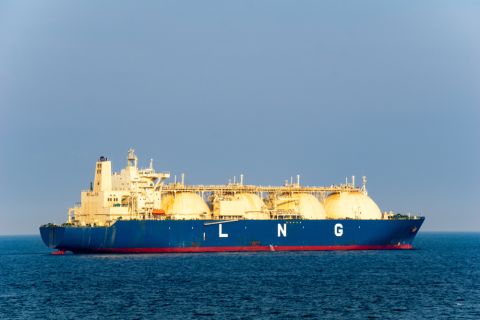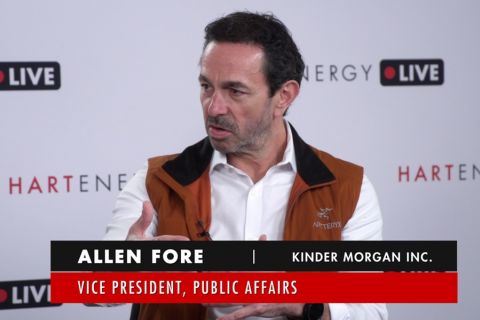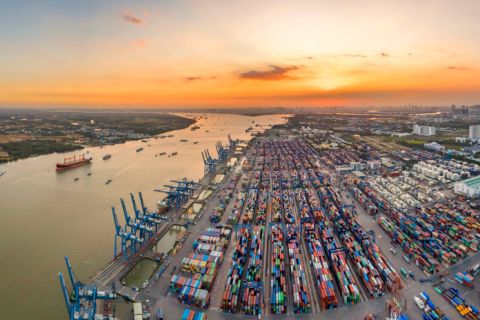As demand for energy and energy preferences change, companies are evaluating investments in new plants or upgrading existing facilities to accommodate increased production – bringing with it new challenges to plant safety. All industrial facilities, not just oil and gas, need to ensure their plants have proper industrial fire safety systems in place to help mitigate issues and prevent downtime while keeping employees safe. Failure to do so can lead to detrimental consequences such as injuries or plant shutdowns.
While there isn’t a one-size-fits-all solution, there are critical elements engineers and managers should keep in mind when designing an effective industrial fire system or upgrading their current system. Here are a few questions to keep in mind when working with a fire safety solutions provider:
How can I ensure my industrial fire system is simple to control and maintain?
The key to a simple and effective industrial fire safety and life protection system is integration. Integration involves a layered approach to safety that encompasses both process and system technology, making systems easier to use and maintain which allows engineers to focus on other critical operations in the plant.
Most facilities today have systems in place that consist of fire detection, gas detection and suppression components that are controlled by separate panels. For optimal efficiency and safety simplified, streamlining these components through one control panel can help facilities respond more quickly and precisely.
What are some qualities of a safety simplified industrial fire safety system?
An industrial fire system should be Safety Integrity Level (SIL) rated. SIL certification is an international standard that identifies all process hazards, estimates the risk of failure and determines if a failure occurs, the product will “fail safely.” Every component in the instrument must be examined and verified based on these criteria to comply with the SIL constraints. For an industrial fire safety system, look for SIL2-rated solutions with redundancy and hot swapability.
Combining equipment into one panel reduces space and simplifies the operation and maintenance. Redundancy is an important feature of a safety simplified system as it can eliminate single points of failure by building in multiple layers of protection in fire and gas detection as well as suppression capabilities. These redundancies help increase reliability, while combining systems reduce complexities.
Hot swapability maintains uptime, serving as part of the integrated, layered system. It allows providers to install new or maintain existing devices without disruptions to plant operations. It can also save time during shutdowns to allow engineers to focus on other tasks.
How do I make sure that my safety system supports the evolving needs of my company?
Often installations done over time become a collection of unique systems assembled together to work as one. Each system requires a working knowledge and the interconnectivity thoroughly understood by an engineer. That knowledge may be lost over time, thus compromising uptime.
For an existing site, one way is upgrading the control system. This can be accomplished while using the existing field devices, saving installation time, material and wiring costs. Also, it provides flexibility to upgrade the complete system over time rather than one large project. Ideal for those shorter shutdown periods.
New plant designs can learn from existing systems. Changes will occur as the plant ages and the system must be easily scalable and upgradeable. Ultimately, engineers and solutions providers should look for solutions that can help build a system that is as flexible as possible and provides the highest level of uptime.
Looking ahead, what changes in the industry should we be prepared for?
Facilities are exploring various ways to increase production capacity including expanding existing plants or investing to build new ones. For plants choosing to upgrade, ensuring that new industrial fire components are compatible with the existing system will be critical for seamless integration and uninterrupted production. Most importantly reducing the number of unique systems and requiring them to work as one. This becomes a custom solution where a high level of expertise is required.
The type of energy being consumed is also shifting. Based on the 2019 U.S. Gas Power Plants Engineering & Construction Trends and Outlook, older plants generating energy from coal are being replaced by natural gas facilities. Demand for gas detection with a SIL2 requirement will become common. Exploration, extraction, production, compression, distribution and storage will require a compact safety simplified systems. A conversation with a solutions provider can help to determine the most appropriate system that fits the application needs. Industrial fire safety systems are customized to protect against what is being produced in each plant.
As energy companies assess production solutions and source shifts, maintaining a regular conversation with a fire safety solutions provider to address these questions will be key to ensuring high uptime and employee safety within the facility.
Source: International Electrotechnical Commission, IEC 61508 Functional Safety, (accessed April 15, 2019)
Recommended Reading
Watson: Implications of LNG Pause
2024-03-07 - Critical questions remain for LNG on the heels of the Biden administration's pause on LNG export permits to non-Free Trade Agreement countries.
FERC Again Approves TC Energy Pipeline Expansion in Northwest US
2024-04-19 - The Federal Energy Regulatory Commission shot down opposition by environmental groups and states to stay TC Energy’s $75 million project.
Kinder Morgan Exec: Building Pipelines ‘Challenging, but Manageable’
2024-04-05 - Allen Fore, vice president of public affairs for Kinder Morgan, said building anything, from a new road to an ice cream shop, can be tough but dealing with stakeholders up front can move projects along.
The Jones Act: An Old Law on a Voyage to Nowhere
2024-04-12 - Keeping up with the Jones Act is a burden for the energy industry, but efforts to repeal the 104-year-old law may be dead in the water.
Vietnam Seeks Delicate Balance Among US, China, Russia
2024-02-08 - Ongoing U.S. tensions with China and Russia offer Vietnam an opportunity to boost economic ties with the former if American investors can steer past geopolitical smokescreens and destine funds for infrastructure, power and LNG projects all somewhat tied to Vietnam’s manufacturing sector.





